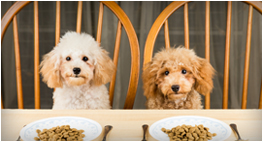Dog scooting - why does my dog drag their bum along the ground?
Humans may have perfected the subtle butt scratch in public but our canine friends still seem to be learning the delicacy of this art. When I brought my pooches into the office recently, one of them had an instant affinity to the carpet and before long, was quite conspicuously scooting his derriere across the office floor. Maybe it's the fervent lip licking or the thought of their bare bumhole scraping against the carpet but there is just something about scooting that is disturbing to watch.
Truth be told, it can also be quite entertaining to watch their little legs poised perfectly straight out front as they joyfully scoot around. That's one of the reasons why we love dogs right? Their shame free approach to life and utter lack of inhibitions.
Aside from the laughter and slight embarrassment, bum scooting is usually a sign your dog is experiencing irritation around the anus.
They could have a problem with their anal sacs

Dogs have two glands located around their anus at five and seven o'clock positions. Aside from urination, a dog's scent is spread from their anal glands, a high wagging tail helps to spread their scent while a still, tucked tail helps to hide it. Anal glands are naturally expressed from the stretching of the sphincter during bowel movements however they can become blocked resulting in a buildup of fluid.
Anal glands can become impacted if the duct is obstructed or has suffered physical trauma. Dogs will try to alleviate discomfort or pain caused from irritated anal sacs by scooting their bum across the floor as well as licking or biting near the anus and around the base of the tail.
Inflammation can affect anal glands if they have been expressed incorrectly or too frequently. Avoid manually draining your dog's anal sacs if it is not required as this may inhibit the dog's ability to express the fluid naturally. Increasing stool firmness by feeding a high fibre diet can help as it increases pressure on the sphincter's muscles to trigger fluid elimination.
Is your dog being treated for intestinal worms?

If your dog's anal sacs are functioning normally, another common cause of the booty scoot could be some unfriendly parasites. Tapeworm is an intestinal worm that is contracted from eating an infected flea.
Tapeworm can be treated easily with all-wormers like Drontal. Regularly treating your dog for fleas will reduce exposure to potentially infected fleas. Nexgard chews and Frontline Plus spot on treatments both offer monthly coverage from fleas.
Tapeworm infestations can easily be identified in your pooch's feces. Tapeworm bodies are made up of many segments and when these break off or are shed, they are eliminated as waste. The segments look similar to grains of rice in terms of shape, size and sometimes colour. You may also be able to see shed segments on the fur near your pet's anus or in their bed.
No more scooty patootie

Most dogs do the bum run because of irritated anal glands or an intestinal worming problem. If your dog has very soft or runny stools, add more fibre to their diet. Most light or weight loss dog foods have a higher fibre content than regular maintenance diets. If your dog is still unable to naturally relieve their anal glands, consult your vet or groomer to get them manually expressed.
Tapeworm infestations can be quickly exterminated with allwormers Drontal or Valueplus. Infestations can be easily identified as white, rice-like segments in the stools or around the anus.
If you're sure neither the anal glands or tapeworms are the culprit, it's best to visit your vet for a check up.
Owner of a small Chihuahua army and lover of all things pets; when Jess isn't managing her pup Nacho's instagram you can find her writing about all the awesome new products on the Pet Circle website!
Suggested for you
























